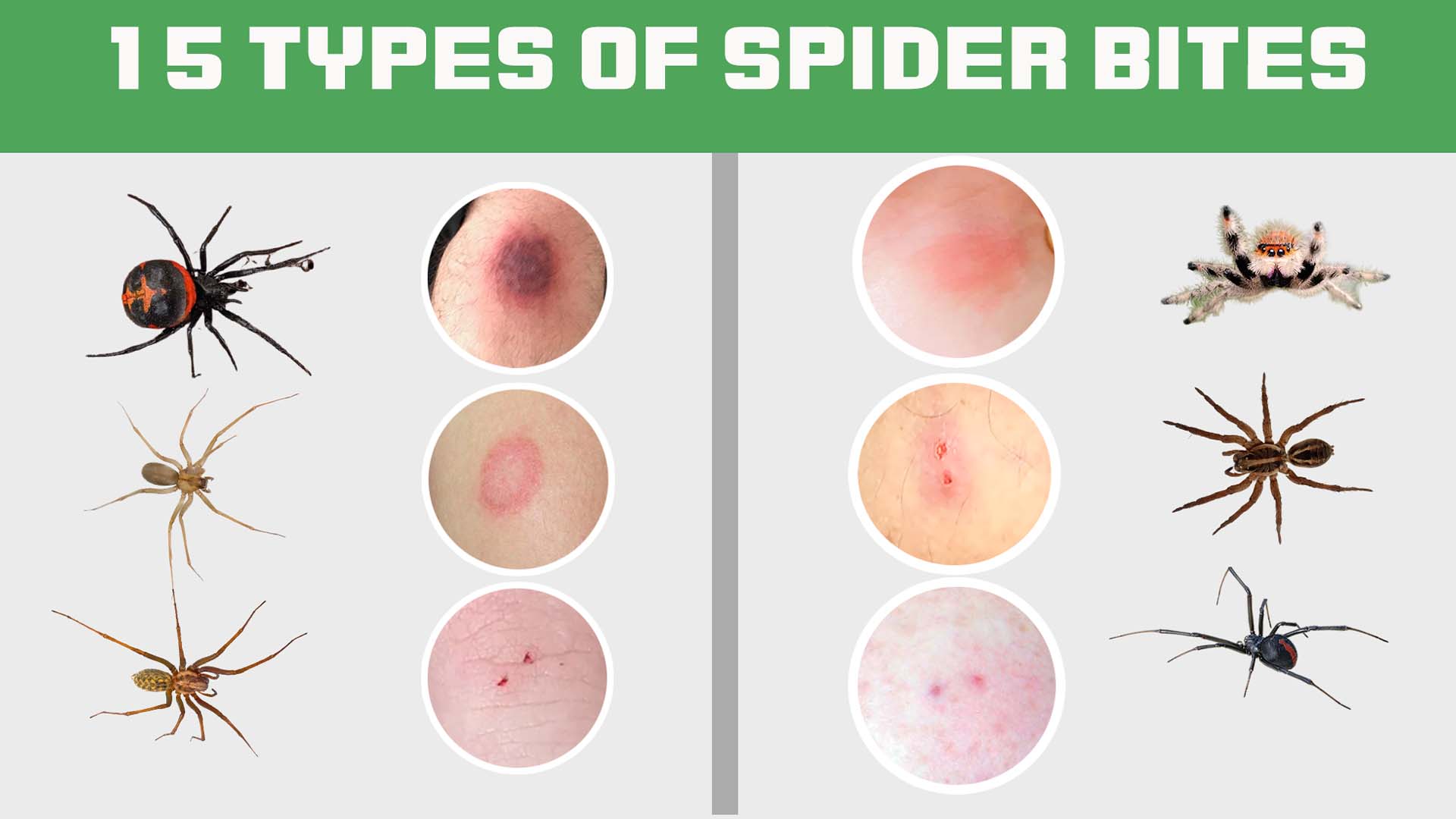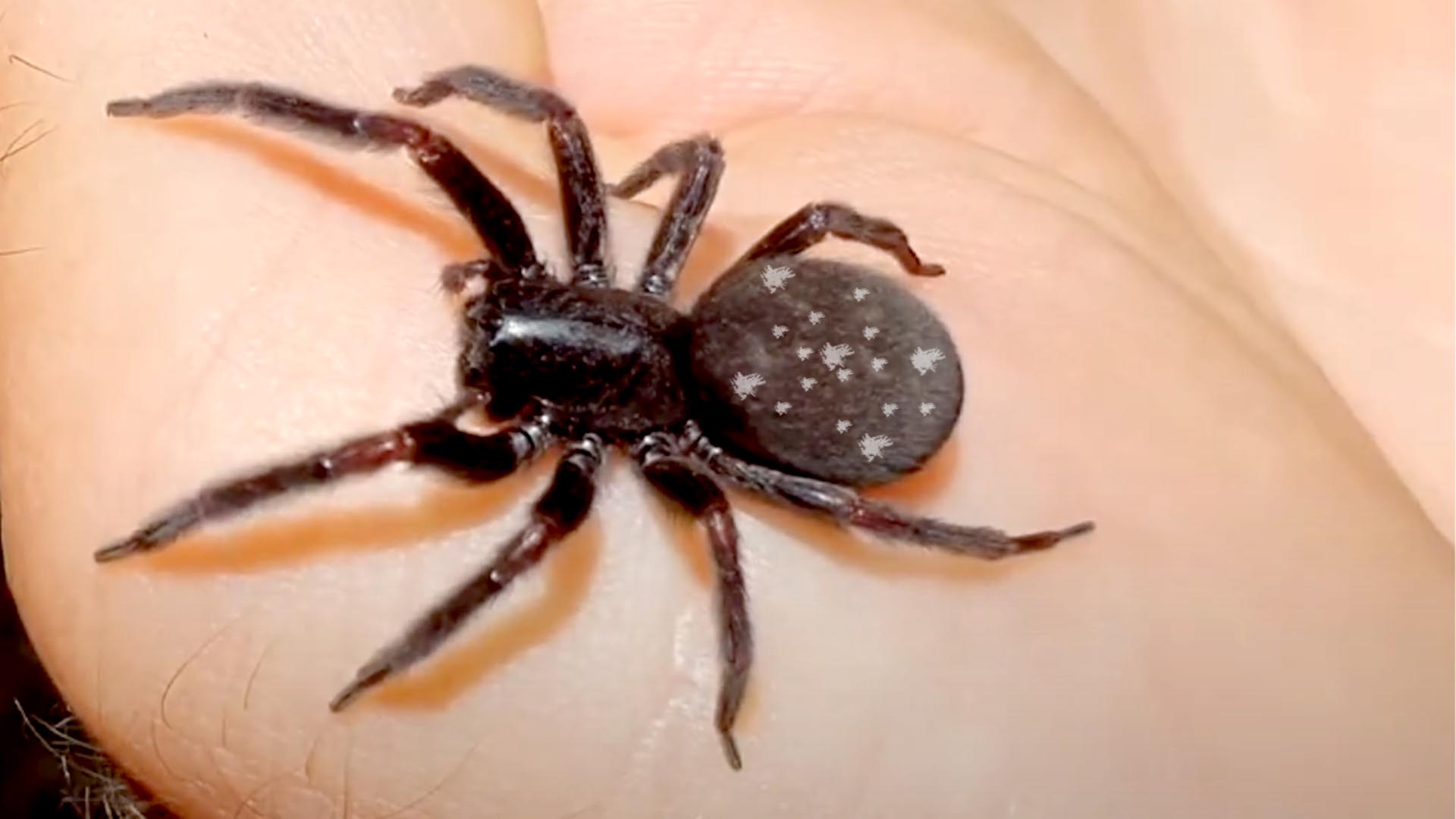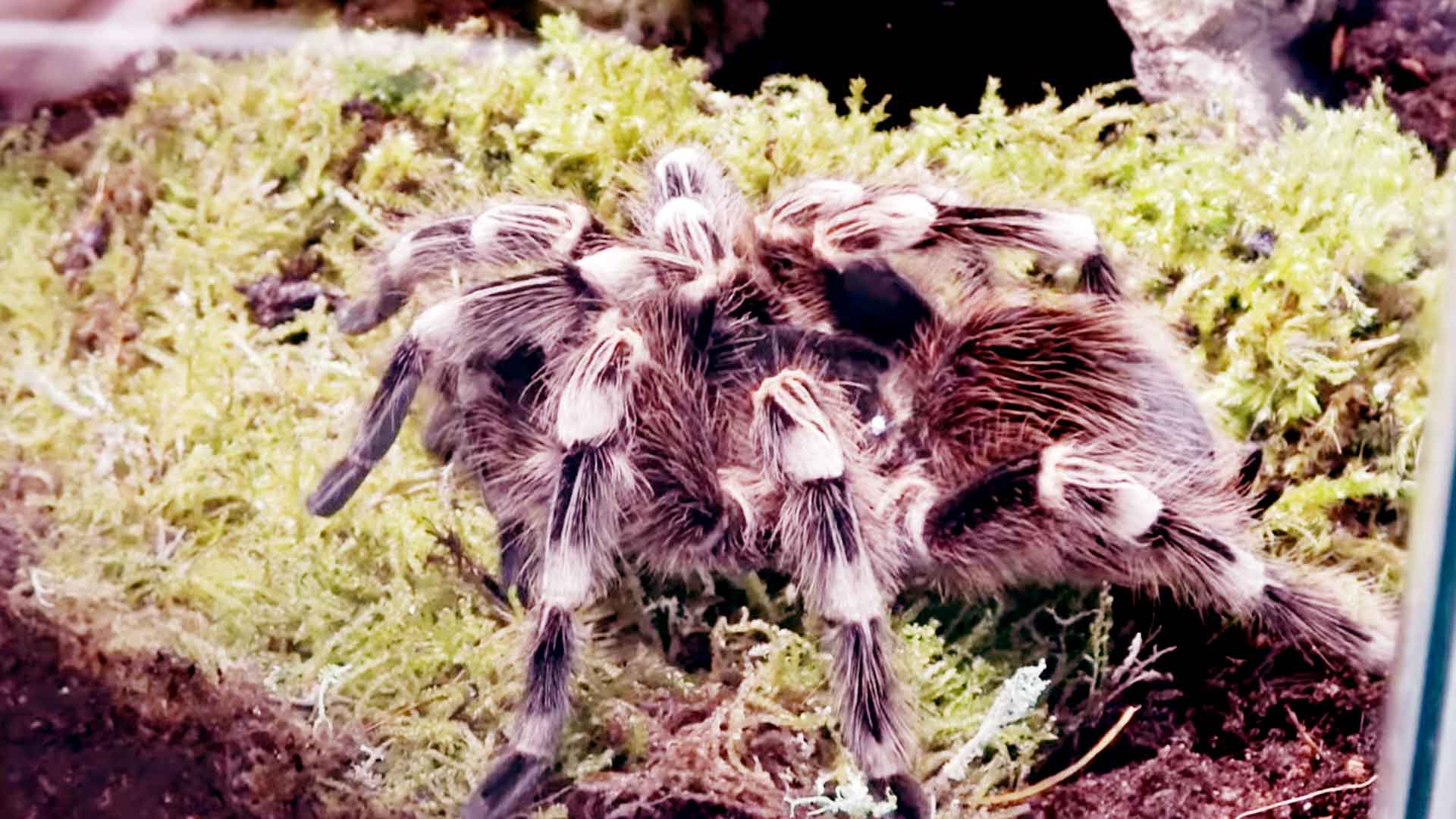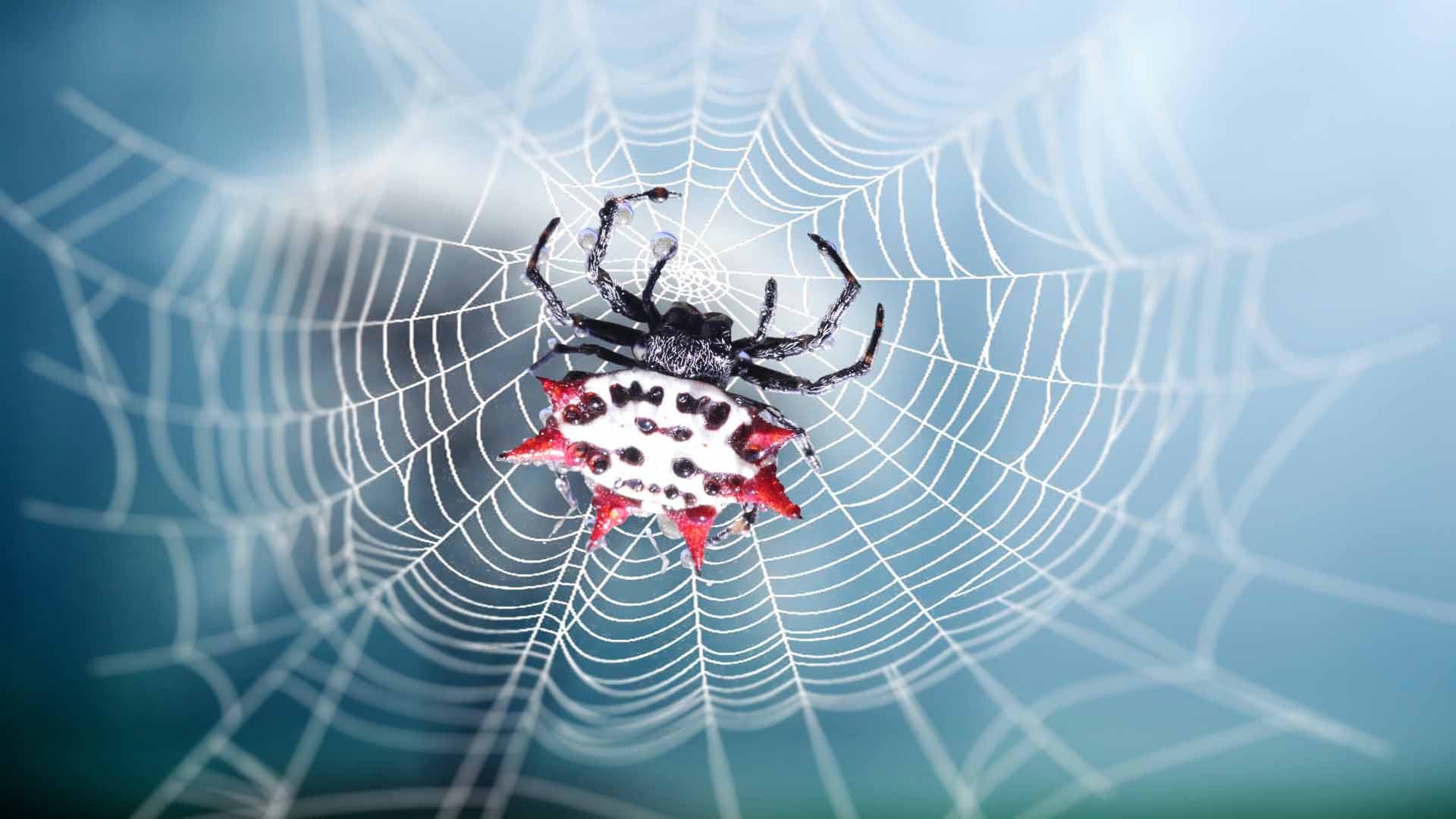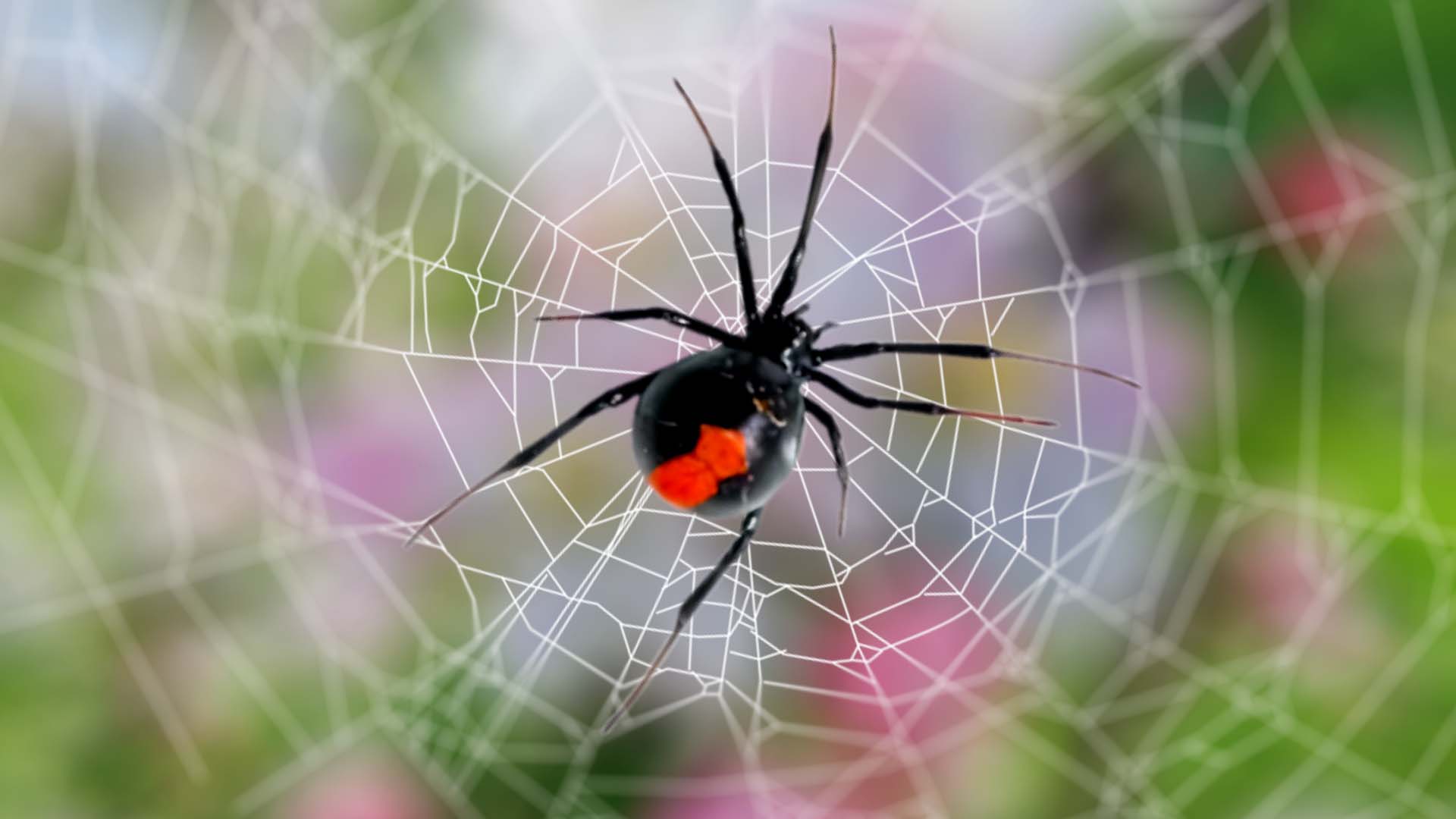Spider bites can range from minor annoyances to potentially harmful situations. Recognizing the distinct characteristics of different spider bites is crucial for both accurate identification and appropriate treatment. Here’s a comprehensive exploration of 15 types of spider bites, delving into their appearance, symptoms, identification, and treatment approaches:
Black Widow Spider Bites
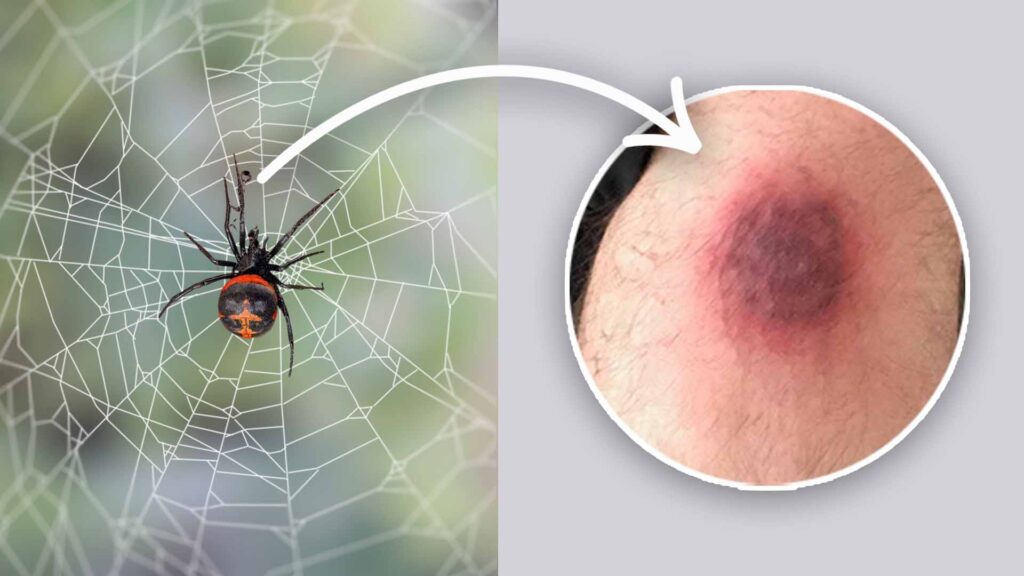
Black widow spiders are known for their potent venom and distinctive appearance. While bites from these spiders are relatively rare, they can cause serious symptoms that require medical attention.
Bite Appearance
Black widow spider bites often appear as two small puncture marks surrounded by redness and swelling. The fang marks might not always be visible, making identification challenging. The bite area can become tender and painful, and the pain often starts within the first hour after being bitten.
Bite Symptoms
Symptoms of a black widow spider bite can vary widely but commonly include intense pain radiating from the bite area, muscle cramps, stiffness, and sweating. In severe cases, abdominal pain, difficulty breathing, and elevated blood pressure might occur. Young children, the elderly, and individuals with pre-existing health conditions are at a higher risk of experiencing severe symptoms.
Bite Identification
Identifying a black widow spider bite can be tricky due to the similarity of symptoms with other medical conditions. If you suspect a black widow bite, it’s essential to seek medical help for accurate diagnosis and treatment.
Bite Treatment
If bitten by a black widow spider, immediate medical attention is crucial. Treatment may involve pain management, muscle relaxants, and antivenom in severe cases. Applying a cold compress and keeping the bitten limb elevated can help alleviate pain and swelling while awaiting medical help.
How can You prevent black widow spider bites?
To reduce the risk of bites, wear gloves when working outdoors, shake out shoes and clothing before wearing them, and eliminate clutter in and around your home where spiders might hide.
Are black widow spider bites usually fatal?
Fatalities from black widow spider bites are rare, especially with prompt medical treatment. Most healthy individuals experience painful symptoms but recover fully with appropriate care.
Brown Recluse Spider Bites
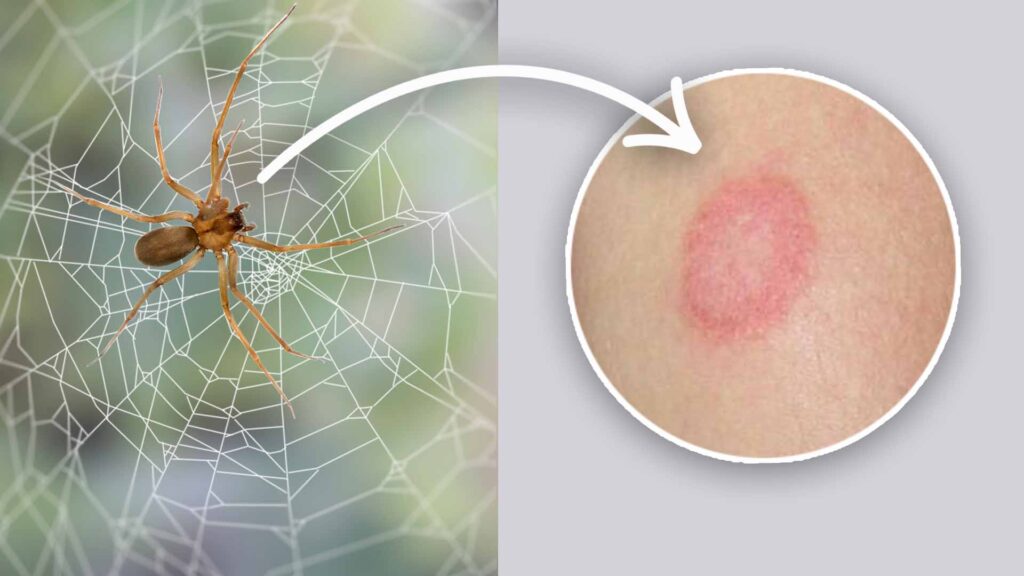
Brown recluse spiders are known for their potentially harmful bites. These spiders are typically found in certain regions and can cause local tissue damage. Recognizing their bites and seeking proper medical attention is crucial.
Bite Appearance
Brown recluse spider bites often have a distinctive appearance. They usually start as a red, swollen bump that develops a central blister within hours. Over time, the blister can turn into an open ulcer that may heal slowly and leave a scar. The surrounding tissue might become discolored, and the bite area can be painful.
Bite Symptoms
Symptoms of a brown recluse spider bite can include pain, itching, and burning at the bite site. In some cases, systemic symptoms like fever, nausea, and muscle pain might occur. Severe cases can lead to necrotic tissue, where the skin and underlying tissue die.
Bite Identification
Identifying a brown recluse spider bite can be challenging due to the similarity of symptoms with other conditions. The presence of a necrotic ulcer, coupled with the spider’s habitat in endemic areas, can help in identifying a possible bite.
Bite Treatment
If bitten by a brown recluse spider, seek medical attention promptly. Treatment may involve wound care, pain management, and, in severe cases, surgical removal of necrotic tissue. Tetanus vaccination might be recommended if needed.
Are brown recluse spider bites always dangerous?
While most brown recluse bites result in mild symptoms, some can lead to significant tissue damage. Prompt medical evaluation and care can prevent complications.
How can I prevent brown recluse spider bites?
To reduce the risk, shake out clothing and bedding before use, keep bedding away from the floor, seal cracks in walls and floors, and use insecticides as recommended by professionals. If you suspect an infestation, consider reaching out to pest control experts.
Hobo Spider Bites
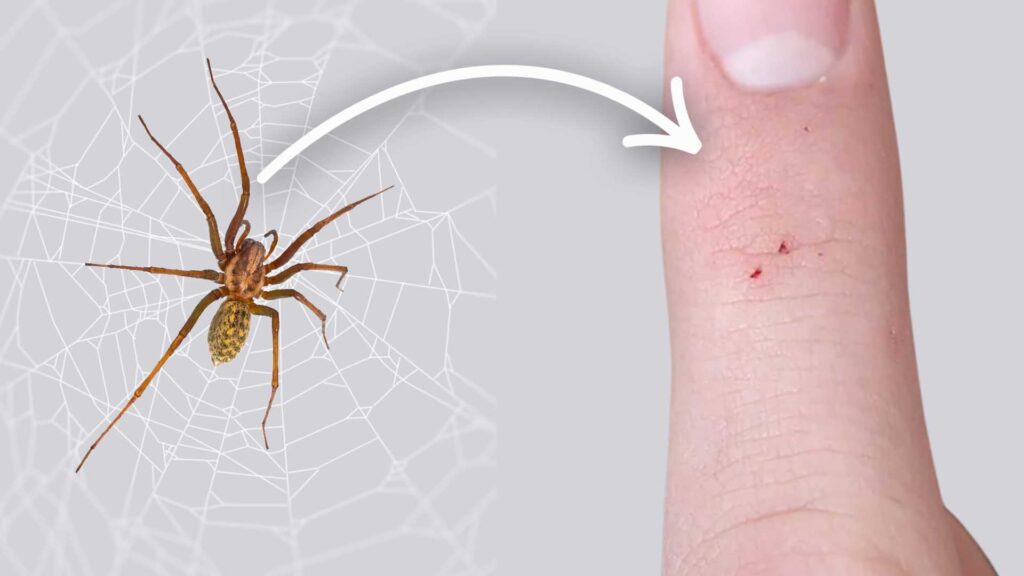
Hobo spiders, also known as the “aggressive house spider,” are often associated with their potentially venomous bites. While their bites are not as well-documented as some other spiders, it’s important to understand their characteristics and potential effects.
Bite Appearance
Hobo spider bites can initially appear as red, swollen, and mildly painful areas similar to other insect bites. The bite site might develop into a lesion with a central blister, which can gradually turn into an open sore. Unlike some other spider bites, hobo spider bites might not have a distinct “bullseye” pattern.
Bite Symptoms
Symptoms of a hobo spider bite can include localized pain, itching, and mild to moderate inflammation. In some cases, the bite area might develop into a necrotic wound, although such instances are less common and not as well-established as with brown recluse bites. Systemic symptoms like fever and malaise are generally not associated with hobo spider bites.
Bite Identification
Identifying a hobo spider bite can be challenging due to the similarity of symptoms with other conditions. Accurate identification often requires capturing the spider for proper assessment. If possible, catch the spider in a container and consult with a pest control or medical professional.
Bite Treatment
If bitten by a hobo spider, clean the wound with mild soap and water and apply an antiseptic. Over-the-counter pain relievers and anti-inflammatory medications can help manage pain and discomfort. Keep the bite area clean and monitor it for signs of infection or worsening symptoms. Seek medical attention if there’s any concern about the bite’s progression.
Are hobo spider bites as dangerous as brown recluse bites?
There is ongoing debate about the severity of hobo spider bites. While some experts believe they can cause necrotic wounds, the evidence is not as strong as with brown recluse spider bites. Still, it’s important to exercise caution and seek medical help if needed.
How can I prevent hobo spider bites?
To reduce the risk, keep your home clean and clutter-free, seal cracks and crevices, use screens on windows and doors, and consider professional pest control measures if you suspect an infestation. Shake out clothing and shoes before wearing them, especially if they’ve been stored in areas where hobo spiders might be present.
Wolf Spider Bites
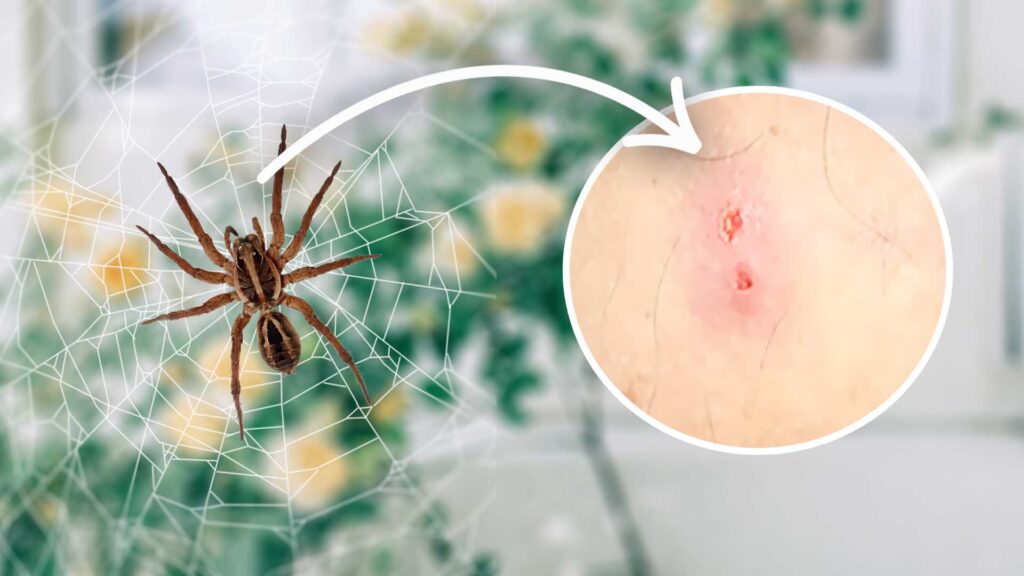
Wolf spiders are common spiders known for their large size and robust appearance. While their bites can be painful, they are generally not considered medically significant and rarely result in severe complications.
Bite Appearance
Wolf spider bites typically appear as red, swollen bumps at the bite site. The bite area may be surrounded by mild redness and inflammation. Unlike some other spider bites, wolf spider bites usually do not produce a central blister or necrotic lesion.
Bite Symptoms
Symptoms of a wolf spider bite often include localized pain, itching, and discomfort. The pain is generally similar to that of a bee sting and may last for a few hours to a day. Some individuals might experience minor swelling and redness at the bite site.
Bite Identification
Identifying a wolf spider bite can be challenging as the symptoms are often mild and non-specific. If you suspect a wolf spider bite, it’s essential to observe the bite site for any signs of infection or allergic reaction. If the symptoms worsen or you have concerns, consult a medical professional.
Bite Treatment
Treatment for wolf spider bites primarily focuses on managing pain and discomfort. Over-the-counter pain relievers, antihistamines, and cold compresses can help alleviate symptoms. Clean the bite area with mild soap and water to prevent infection, and keep an eye on it for any changes.
Are wolf spider bites poisonous?
Wolf spiders do possess venom, but their bites are generally not considered dangerous to humans. The venom is used to immobilize their prey, and while a bite can be painful, it rarely leads to serious medical issues.
How can I prevent wolf spider bites?
To reduce the risk of wolf spider bites, keep your living spaces clean and free of clutter. Seal gaps and cracks in doors, windows, and walls to prevent spiders from entering your home.
Redback Spider Bites
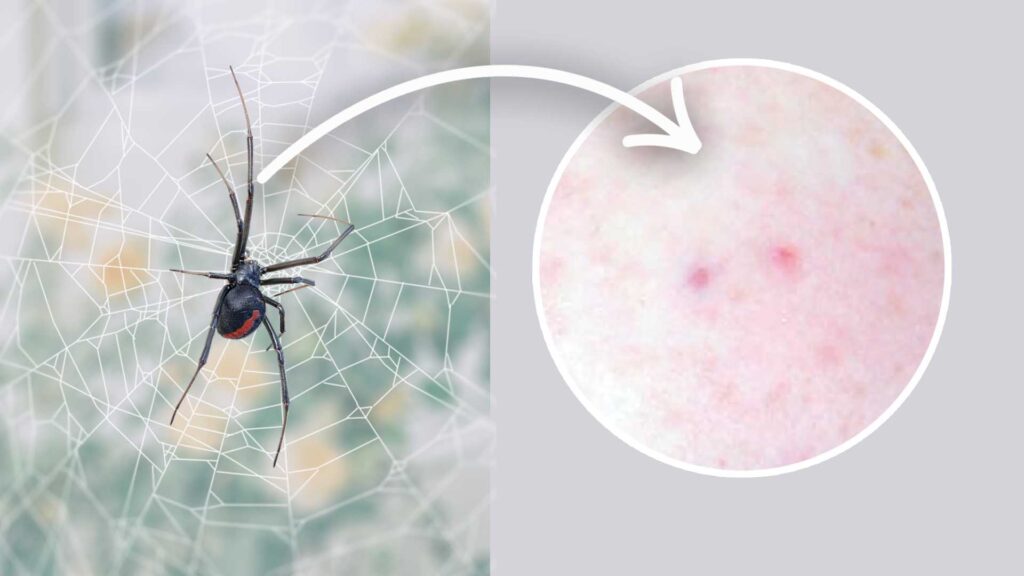
Redback spiders are venomous spiders native to Australia. Their bites can be painful and, in some cases, lead to significant symptoms. Understanding their characteristics and knowing how to respond to their bites is crucial, especially for individuals in regions where they are found.
Bite Appearance
Redback spider bites typically result in a localized, painful area at the bite site. The bite may cause immediate pain, which can radiate to other parts of the body. The bite mark might have small fang marks and can become red, swollen, and itchy.
Bite Symptoms
Symptoms of a redback spider bite can vary. They commonly include severe pain, muscle cramps, sweating, and nausea. In some cases, the pain can be intense and radiate through the limbs. Systemic symptoms such as headache, fever, and weakness might also occur.
Bite Identification
Identifying a redback spider bite might involve recognizing the pain and other symptoms associated with it. The presence of the redback spider, with its distinctive black body and red marking on the abdomen, can also help confirm the likelihood of a bite.
Bite Treatment
If bitten by a redback spider, seek medical attention as soon as possible, especially if severe symptoms develop. The treatment may involve pain relief, muscle relaxants, and antivenom in severe cases. Applying an ice pack to the bite area can help alleviate pain and swelling before receiving medical care.
Are redback spider bites usually fatal?
Fatalities from redback spider bites are rare due to the availability of antivenom and prompt medical care. However, severe bites can lead to significant discomfort and potential complications, especially in vulnerable individuals.
How can I prevent redback spider bites?
To reduce the risk of bites, avoid reaching into dark, hidden spaces without checking first. Shake out clothing, shoes, and gardening gloves before using them. Keep outdoor areas tidy and clear of clutter. In regions where redback spiders are prevalent, consider reaching out to pest control experts for advice on managing the spider population around your home.
Funnel-Web Spider Bites

Funnel-web spiders are notorious for their highly venomous bites, predominantly found in Australia. These spiders can pose a serious threat to human health due to their potent venom. Understanding their bites and seeking immediate medical attention is crucial.
Bite Appearance
Funnel-web spider bites often cause immediate and intense pain at the bite site. The bite might produce two small puncture marks due to the spider’s large fangs. Localized swelling, redness, and numbness can develop rapidly.
Bite Symptoms
Symptoms of a funnel-web spider bite can escalate rapidly. They include severe pain, muscle cramps, sweating, difficulty breathing, and elevated heart rate. The venom can affect the nervous system, leading to neurological symptoms like tingling, twitching, and confusion.
Bite Identification
Identifying a funnel-web spider bite can involve recognizing the pain and rapid onset of symptoms. It’s important to remember that funnel-web spiders are highly venomous, and if you suspect a bite, seek medical assistance immediately.
Bite Treatment
If bitten by a funnel-web spider, call emergency services immediately or seek urgent medical attention. Apply a pressure bandage and immobilize the affected limb if possible to slow the venom’s spread. Do not attempt to suck out the venom or cut the bite area, as these actions can worsen the situation.
Can funnel-web spider bites be fatal?
Yes, funnel-web spider bites can be fatal if left untreated. However, with timely medical intervention and administration of antivenom, fatalities can be prevented. Antivenom is specifically developed to counteract the effects of the venom.
How can I prevent funnel-web spider bites?
To reduce the risk of bites, be cautious when handling objects in outdoor areas where funnel-web spiders might hide. Wear gloves while gardening, and avoid reaching into dark and hidden spaces without proper inspection. If you encounter a funnel-web spider, do not provoke or handle it. In areas where these spiders are common, consider professional pest control measures.
Sydney Funnel-Web Spider Bites
The Sydney funnel-web spider, found in the Sydney region of Australia, is renowned for its potent venom and dangerous bites. Swift action is essential when dealing with these spiders due to the severity of their venom.
Bite Appearance
Sydney funnel-web spider bites often result in immediate and intense pain at the bite site. Fang marks may be visible, and the area can become red, swollen, and tender. The venom’s effects can spread rapidly.
Bite Symptoms
Symptoms of a Sydney funnel-web spider bite can escalate quickly. They include severe pain, muscle spasms, sweating, tingling, and numbness. The venom targets the nervous system, potentially leading to difficulty breathing and altered heart rate.
Bite Identification
Identifying a Sydney funnel-web spider bite requires recognizing the severity of the symptoms. The rapid onset of intense pain and the spider’s distinct appearance are key factors. If you suspect a bite, seek immediate medical assistance.
Bite Treatment
If bitten by a Sydney funnel-web spider, call emergency services or head to a hospital immediately. Applying a pressure bandage and immobilizing the affected limb can slow the venom’s spread.
How lethal are Sydney funnel-web spider bites?
Sydney funnel-web spider bites can be life-threatening if not treated promptly. The venom can have severe effects on the nervous system. However, antivenom is available and has been successful in preventing fatalities when administered in time.
How can I protect myself from Sydney funnel-web spider bites?
To minimize the risk, avoid handling or provoking funnel-web spiders. Shake out clothing and shoes, especially those left outdoors. Keep outdoor areas tidy and clear of debris. If you live in an area where these spiders are found, consider professional pest control measures to manage their presence.
Brazilian Wandering Spider Bites
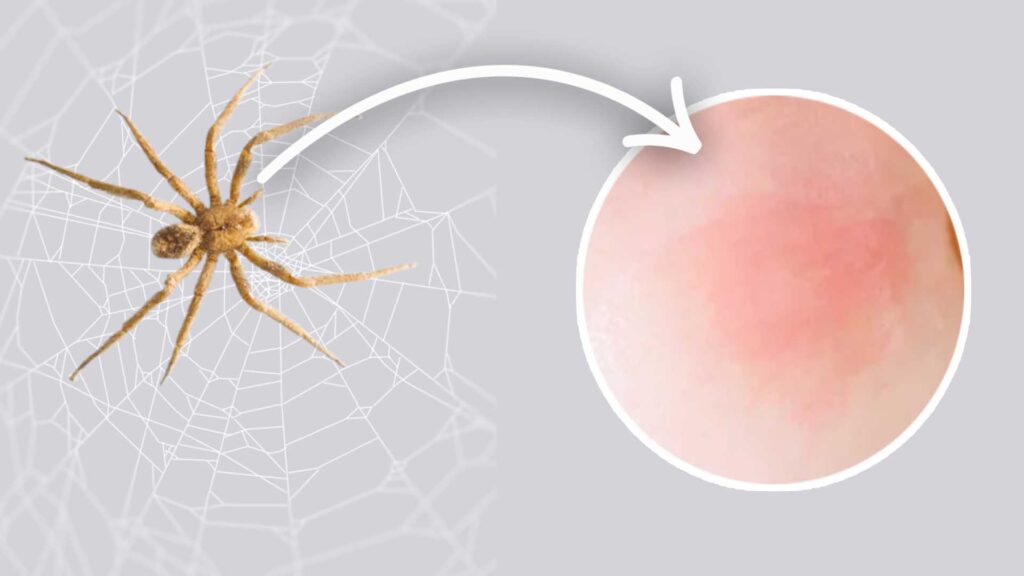
The Brazilian wandering spider, also known as the banana spider, is one of the world’s most venomous spiders. Found primarily in South and Central America, its bites can be dangerous and require immediate medical attention.
Bite Appearance
Brazilian wandering spider bites often result in immediate and intense pain at the bite site. The bite area can become red, swollen, and tender. Fang marks might be visible, and the venom’s effects can spread rapidly.
Bite Symptoms
Symptoms of a Brazilian wandering spider bite can vary, but they may include severe pain, muscle cramps, sweating, and trembling. The venom can affect the nervous system, leading to symptoms such as increased heart rate, breathing difficulties, and even paralysis.
Bite Identification
Identifying a Brazilian wandering spider bite involves recognizing the intensity of the symptoms. The rapid onset of severe pain and the spider’s appearance are important factors.
Bite Treatment
If bitten by a Brazilian wandering spider, seek medical assistance without delay. Applying a pressure bandage and immobilizing the affected limb can help slow the venom’s spread. Refrain from attempting to suck out the venom or cutting the bite area.
Are Brazilian wandering spider bites usually fatal?
Fatalities from Brazilian wandering spider bites are rare due to the availability of medical care. However, the venom’s potency can lead to severe symptoms, making timely medical intervention crucial.
How can I prevent Brazilian wandering spider bites?
To minimize the risk, be cautious when handling items from regions where these spiders are present. Shake out shoes, gloves, and clothing before use, especially if stored outdoors. Keeping your living space tidy and taking measures to exclude spiders can help reduce the likelihood of encounters.
Tegenaria Domestica Spider Bites
Tegenaria domestica, commonly known as the house spider or barn funnel weaver, is a common spider found in homes and other structures. While their bites are not typically considered harmful, it’s helpful to understand their characteristics and potential effects.
Bite Appearance
Tegenaria domestica spider bites usually result in small, red, raised bumps at the bite site. The bites may be slightly itchy or cause mild irritation. These bites often appear similar to other insect bites and are generally not cause for significant concern.
Bite Symptoms
Symptoms of a Tegenaria domestica spider bite are usually mild and might include slight discomfort, localized redness, and mild itching. Severe symptoms are extremely rare and unlikely to occur from this spider’s bite.
Bite Identification
Identifying a Tegenaria domestica spider bite might involve considering the symptoms in relation to the spider’s presence in your living space. If you experience a bite with mild symptoms and suspect it might be from a house spider, observation and basic wound care are usually sufficient.
Bite Treatment
Treatment for Tegenaria domestica spider bites usually involves basic wound care. Clean the bite area with mild soap and water, apply an antiseptic if desired, and keep an eye on the site for any signs of infection. Over-the-counter pain relievers and topical anti-itch creams can help manage discomfort.
Can Tegenaria domestica spider bites be dangerous?
Tegenaria domestica spider bites are generally not dangerous. Their venom is not potent enough to cause significant harm to humans, and severe reactions are exceedingly rare.
Cellar Spider Bites
Cellar spiders, also known as daddy longlegs spiders, are common arachnids found in homes and buildings. Despite their somewhat menacing appearance, their bites are generally harmless to humans. Understanding their bites can help alleviate concerns.
Bite Appearance
Cellar spider bites typically result in small, red, raised bumps at the bite site. The bites are usually painless or cause only minor discomfort. Similar to other harmless spider bites, they might resemble mosquito or other insect bites.
Bite Symptoms
Symptoms of a cellar spider bite are usually mild, including minimal pain or irritation at the bite site. Some people might not even notice they have been bitten. Severe reactions are extremely uncommon.
Bite Identification
Identifying a cellar spider bite might involve considering the symptoms alongside the presence of these spiders in your surroundings. Since their bites are usually inconspicuous, and the spiders are non-aggressive, observation and basic wound care are sufficient.
Bite Treatment
Treatment for cellar spider bites typically involves basic wound care. Clean the bite area with mild soap and water, apply an antiseptic if desired, and watch for any signs of infection. Over-the-counter pain relievers and topical anti-itch creams can help manage discomfort if necessary.
How can I prevent cellar spider bites?
To reduce the presence of cellar spiders, keep your living spaces clean and free of clutter. Seal gaps and openings in walls, windows, and doors to prevent spider entry. While these spiders are not known to bite, if you want to avoid contact, shake out clothing and shoes before wearing them, especially if stored in areas where they are commonly found.
Garden Spider Bites
Garden spiders, also known as orb-weaver spiders, are a common sight in gardens and outdoor spaces. These spiders are known for their intricate and beautiful webs. While their bites are generally harmless, it’s valuable to understand their characteristics and potential effects.
Bite Appearance
Garden spider bites typically result in small, red, raised bumps at the bite site. The bites are usually painless or cause only minor discomfort. They might resemble mosquito or other insect bites.
Bite Symptoms
Symptoms of a garden spider bite are usually mild and might include minor pain, redness, and local irritation at the bite site. Garden spider bites are not known to cause severe reactions or significant medical issues.
Bite Identification
Identifying a garden spider bite involves considering the symptoms alongside the presence of these spiders in your outdoor environment. Due to the mild nature of their bites and the lack of harmful effects, observation and basic wound care are typically sufficient.
Bite Treatment
Treatment for garden spider bites usually involves basic wound care. Clean the bite area with mild soap and water, apply an antiseptic if desired, and monitor the site for any signs of infection. Over-the-counter pain relievers and topical anti-itch creams can help manage discomfort if necessary.
Can garden spider bites be dangerous?
Garden spider bites are generally not dangerous to humans. Their venom is not potent enough to cause significant harm, and their fangs are usually too small to penetrate human skin deeply.
How can I prevent garden spider bites?
To minimize the risk of bites, exercise caution when working in gardens or outdoor areas where these spiders might be present. Shake out gardening gloves and clothing before use, as spiders may have taken shelter in them. Keep outdoor spaces tidy and remove debris to discourage spider presence.
Orb-Weaver Spider Bites
Orb-weaver spiders are a diverse group known for their intricate, circular webs. While they are not aggressive and their bites are generally harmless, understanding their bite characteristics and effects can help alleviate concerns.
Bite Appearance
Orb-weaver spider bites usually result in small, red, raised bumps at the bite site. The bites are usually painless or cause only minor discomfort. They might resemble mosquito or other insect bites.
Bite Symptoms
Symptoms of an orb-weaver spider bite are typically mild, including minor pain, redness, and local irritation at the bite site. Severe reactions or significant medical issues from orb-weaver spider bites are extremely rare.
Bite Identification
Identifying an orb-weaver spider bite involves considering the symptoms alongside the presence of these spiders in your environment. Since their bites are generally harmless and the spiders are not aggressive, observation and basic wound care are usually sufficient.
Bite Treatment
Treatment for orb-weaver spider bites typically involves basic wound care. Clean the bite area with mild soap and water, apply an antiseptic if desired, and watch for any signs of infection. Over-the-counter pain relievers and topical anti-itch creams can help manage discomfort if necessary.
Can orb-weaver spider bites be dangerous?
Orb-weaver spider bites are generally not dangerous to humans. Their venom is not potent enough to cause significant harm, and their fangs are typically too small to penetrate human skin deeply.
How can I prevent orb-weaver spider bites?
To minimize the risk of bites, exercise caution when working in areas where orb-weaver spiders might be present, especially around their webs. Shake out clothing and gardening gloves before using them. Keep outdoor spaces tidy to discourage spider presence, as they are drawn to areas with abundant insect prey.
Yellow Sac Spider Bites
Yellow sac spiders are small arachnids known for their sac-like webs and nocturnal behavior. While their bites are generally considered mild, understanding their bite characteristics and potential effects can be helpful.
Bite Appearance
Yellow sac spider bites usually result in small, red, raised bumps at the bite site. The bites are often painful, causing discomfort that can last for several hours. They might appear similar to other insect bites.
Bite Symptoms
Symptoms of a yellow sac spider bite can include localized pain, redness, and swelling at the bite site. Itching and mild inflammation might also occur. Severe reactions to their bites are rare.
Bite Identification
Identifying a yellow sac spider bite involves recognizing the symptoms and considering the spider’s presence in your environment. While bites can be painful, they are usually not dangerous, and observation and basic wound care are sufficient.
Bite Treatment
Treatment for yellow sac spider bites usually involves basic wound care. Clean the bite area with mild soap and water, apply an antiseptic if desired, and watch for any signs of infection. Over-the-counter pain relievers and topical anti-itch creams can help manage discomfort if necessary.
Can yellow sac spider bites be dangerous?
Yellow sac spider bites are generally not dangerous to humans. While their bites can be painful and cause discomfort, severe reactions are rare.
How can I prevent yellow sac spider bites?
To minimize the risk of bites, exercise caution when handling objects in areas where yellow sac spiders might be present. Shake out clothing, shoes, and bedding before using them, especially if they’ve been stored in places where these spiders could hide. Keep indoor spaces clean and clutter-free to reduce spider hiding spots.
Mouse Spider Bites
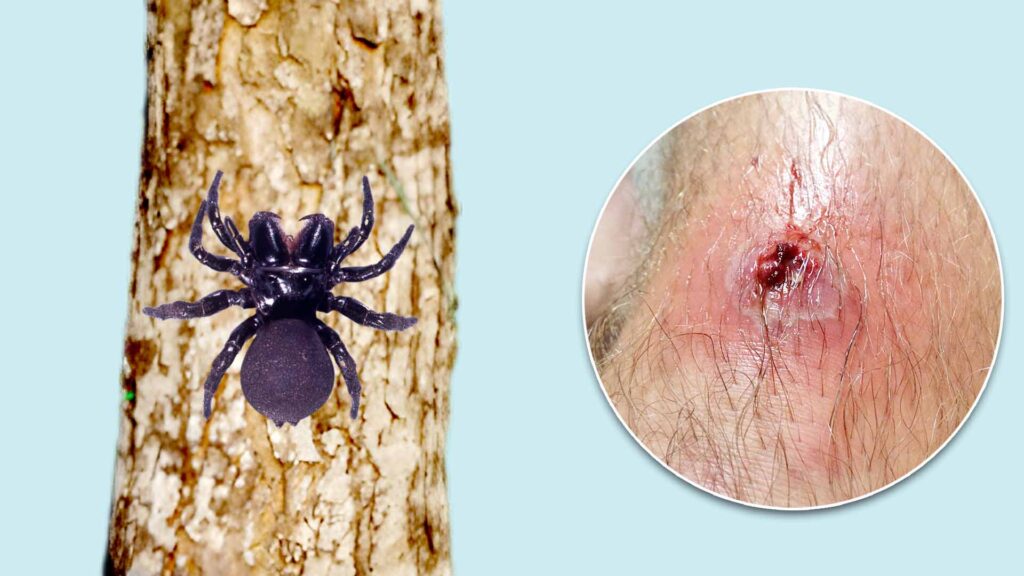
Mouse spiders are venomous spiders found in various regions around the world. While their bites are rare, they can be painful and potentially dangerous. Understanding their bite characteristics and effects is important for those living in areas where these spiders are present.
Bite Appearance
Mouse spider bites often result in immediate pain at the bite site. The bite area can become red, swollen, and tender. Fang marks might be visible, and the venom’s effects can spread rapidly.
Bite Symptoms
Symptoms of a mouse spider bite can include severe pain, localized swelling, redness, and sometimes nausea or vomiting. In some cases, the bite might lead to systemic symptoms such as headache, fever, and muscle pain.
Bite Identification
Identifying a mouse spider bite involves recognizing the intensity of the symptoms. The rapid onset of severe pain and the spider’s appearance are important factors. If you suspect a bite, seek medical attention, especially if you experience significant pain or other symptoms.
Bite Treatment
If bitten by a mouse spider, seek medical assistance promptly. Applying a pressure bandage and immobilizing the affected limb can help slow the venom’s spread. Do not attempt to suck out the venom or cut the bite area. Medical professionals will determine the appropriate treatment, which might include pain management and observation.
Are mouse spider bites usually fatal?
Fatalities from mouse spider bites are rare, especially with timely medical intervention. However, the venom can cause severe symptoms in some cases, making professional medical assessment crucial.
How can I prevent mouse spider bites?
To reduce the risk, be cautious when handling items from regions where these spiders are present. Shake out clothing, gloves, and shoes before use, as spiders may have taken shelter in them. Keep outdoor areas tidy and remove debris to discourage spider presence. If you’re concerned about an infestation, consider professional pest control measures.

